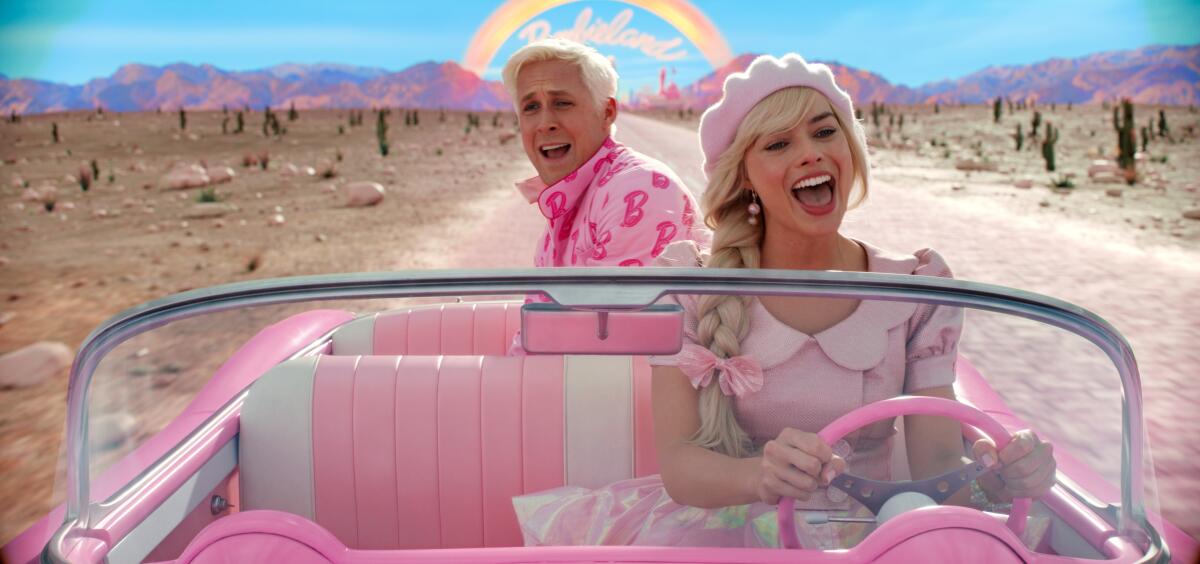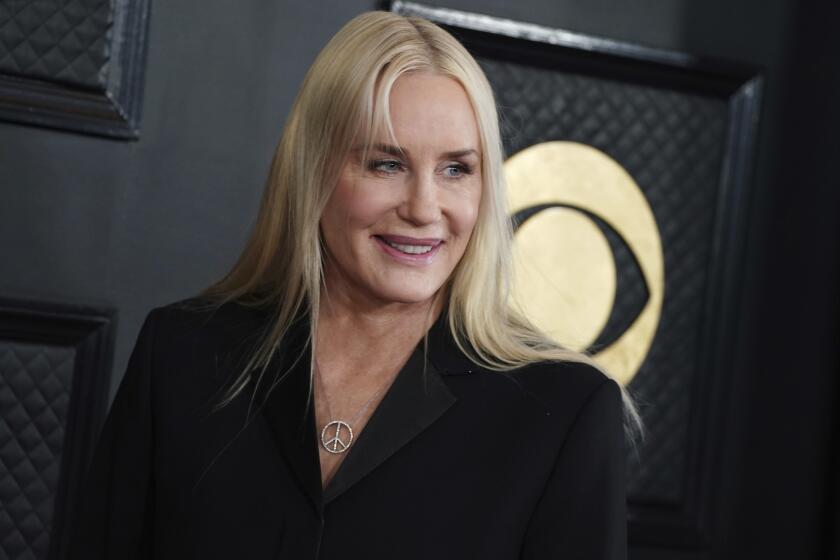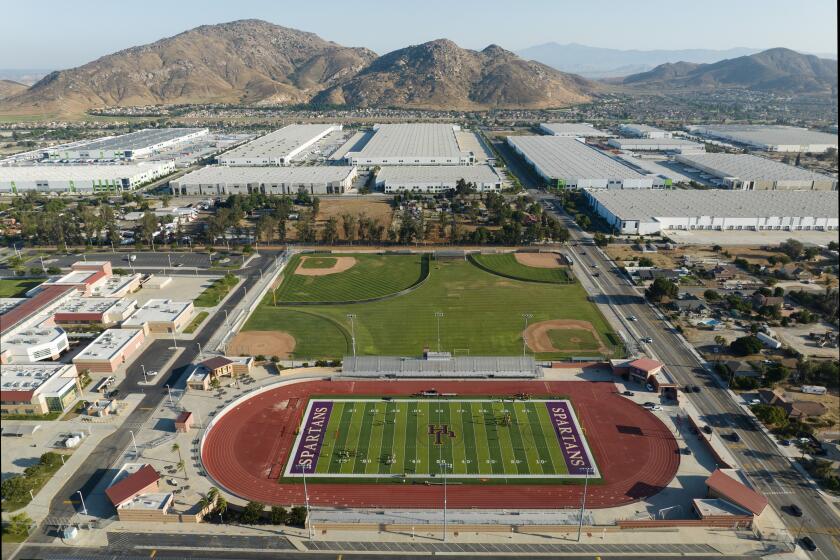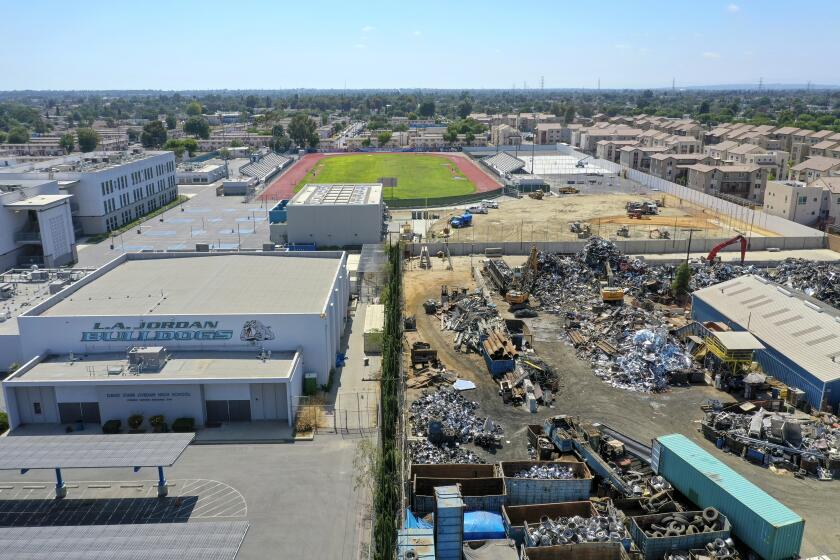Plastic-free Barbie was a hoax, but pollution from the iconic doll is real

- Share via
It was an extraordinary corporate pledge — a promise that not only fit the zeitgeist of an increasingly climate-anxious society, but also sought to reconcile pent-up guilt over mounting plastic waste.
In videos featuring Hollywood star Daryl Hannah, news releases, website testimonials and telephone calls with reporters, one of the world’s largest toy manufacturers had apparently vowed to go plastic-free by the end of the decade. Its iconic Barbie doll — whose smiling polyvinyl chloride face has brought joy to generations of children — would eventually be made of such natural materials as mushrooms, seaweed, clay and bamboo.
One of the reasons for the change of heart, the media blitz said, was that the company had come to recognize the “empty promises of plastics recycling.”
In reality, however, none of it was true.
The plastic-free promise that had gone viral on social media was an elaborate hoax intended to shame the El Segundo-based toy manufacturer Mattel Inc.
Daryl Hannah took part in an elaborate Barbie ‘hoax’ that had many believing she partnered with Mattel on an environmentally conscious EcoWarrior Barbie line.
“The press releases published on Tuesday are fake; they were not issued or authorized by Mattel,” the company told The Times in an email.
On the heels of Mattel Films’ blockbuster “Barbie” movie, the company has been taking heavy criticism over the toy’s environmental footprint. It has also been selling out of movie-related products, according to chief executive Ynon Kreiz.
Each year, Mattel produces roughly 60 million Barbie dolls using a variety of plastics, which are derived from crude oil and manufactured in facilities in China and Mexico. A recent study by DePaul University estimated the production and transportation of Barbie dolls generate about 3.4 million metric tons of climate-warming carbon dioxide — the equivalent of burning 381 million gallons of gasoline.
Once these Barbies are discarded, these plastics linger in the environment for hundreds of years, breaking down into smaller pieces in the natural environment.
While Barbie dolls are only a tiny fraction of the plastics that are produced and discarded globally, the doll’s place in the public consciousness makes it a powerful symbol.
“This is really an iconic toy,” said Christie Klimas, an associate professor of environmental science and author of the DePaul study. “I played with Barbie dolls when I was a kid. But these dolls will outlast me. No matter how many times I pass it on to other people, it’s destined for the dump. It’s great that plastic is designed to last, but this means that it has really high impact.”
Some environmental advocates, including Greta Thunberg, seized on the opportunity to use Barbie’s popularity to spark a broader conversation about the long-lasting effects of plastic pollution and global warming. But the most surprising demonstration was carried out by Hannah and a team of activists who used the Mattel logo to distribute phony news materials claiming the company would stop using plastic materials by 2030.
The so-called Barbie Liberation Organization drafted a news release, filmed three promotional commercials and built a website that mimicked Mattel and distributed the media kit under the pretense they were company officials. They also touted a new line of “Ecowarrior” Barbie dolls that were modeled after prominent environmental advocates including Thunberg and Mattel’s new brand ambassador, Hannah.
The elaborate hoax duped several news organizations and seemingly flipped the script on traditional environmental protests. By using reverse psychology, it had essentially inspired people to make them think plastic-free toys were possible, an expert in corporate sustainability said.
“I think it’s very original, because [environmental activism] is usually much more critical,” said Maggie Delmas, a professor of management at UCLA’s Institute of the Environment and Sustainability. “But people are going to say, ‘Well, why shouldn’t that be real?’ It’s showing what could be done rather than just saying, what you’re doing is bad. I think it’s just brilliant. Mattel can only respond that they are inspired by it, at this point.”
The Fontana City Council has narrowly rejected a proposal to build three sprawling warehouses near two high schools.
Mattel, which has produced more than 1 billion Barbies worldwide since 1959, has previously pledged to use “100% recycled, recyclable, or bio-based plastic” by 2030. It has also encouraged customers to return their unwanted toys so that the company can recycle the materials.
However, the so-called mushroom Barbie stunt has focused lasting scrutiny on the company’s use of plastics, according to crisis public relations expert Eden Gillott.
“BLO’s campaign spotlighted the public appetite for Mattel to curb its plastic waste,” the president of Gillott Communications wrote in an email. “The enthusiasm for a compostable, plastic-free Barbie — hoax or not — underscores the demand for eco-friendlier toys. If Mattel fails to satiate this, its brand, loyalty, and profits could starve. However, the leap to plastic-free production is less a skip and more a tightrope walk, needing significant R&D, rehashed manufacturing, and likely more expenses.”
In an interview with The Times, Hannah, an avid scuba diver, said she has witnessed the pervasiveness of plastics pollution firsthand, recovering a Barbie as she dove over coral reefs in remote waters off the coast of Fiji about a decade ago. The “Kill Bill” actor said she kept that doll, which was featured in one of the spoof commercials filmed in Leo Carrillo State Park in Malibu.
“I thought it was a very profound statement on how we are using our oceans as the trash receptacle and how long these things persist in our environment,” Hannah said.
Though the scheme was a hoax, organizers argue the broader issue couldn’t be more real.
“Toys are great but they don’t have to be made out of toxic materials,” said Hannah. “I’m hoping that Mattel and others embrace it and say that’s a great idea, we’re gonna work towards that.”
Plastic pollution has become one of the world’s most pressing environmental issues. Plastics such as those used in straws and packaging are a low-cost and durable material that can contain harmful chemicals and persist for hundreds of years. And, as a result, plastic-based trash has crowded landfills, littered oceans and been ingested by marine animals.
Children’s toys have been no exception.
As a mother of two, Klimas, the DePaul researcher, said she was inspired to examine the environmental impacts behind popular children’s toys.
“I think my interest in the impact of toys stemmed from a lot of toys that I tripped over in my house,” Klimas joked. “We make these small but impactful choices on a day-to-day basis when we’re giving gifts to other people, but also when we’re purchasing things for our kids for educational experiences. And thinking about ways to potentially decrease the impact of these choices is something that I find really interesting.”
Klimas investigated the materials, manufacturing and shipping of eight toys: two plush dogs, three Lego sets, Jenga blocks, a marble raceway and one Barbie doll. The Jenga blocks had the lowest greenhouse gas emissions and a “Star Wars” Lego set had the highest.
L.A. County Dist. Atty. George Gascón has has filed more than two dozen criminal charges against a notorious scrap metal recycler in Watts.
But plastic toys, on the whole, tended to have more overall emissions, because of the energy required from oil extraction. This was most evident with the two plush dogs, one of which had a plastic casing for batteries.
“Just having a battery pack — and it wasn’t batteries itself, it was the plastic coating for the battery pack — almost doubled the impact of the toy,” Klimas said.
Barbie’s estimated greenhouse gas emissions were in the middle of the pack.
Her head and legs are made using polyvinyl chloride, or PVC. Her torso is fashioned from acrylonitrile butadiene styrene, while her arms are made of ethylvinylacetate. In the U.S., more than 92% of girls between the ages of 3 and 12 have owned a Barbie.
Klimas feared the plastic doll’s popularity would grow even more as a result of the smash-hit movie starring Margot Robbie and Ryan Gosling. The film has grossed more than $1 billion worldwide.
“I have not yet seen the ‘Barbie’ movie, in part, because I thought it was going to increase consumption of Barbies, and that doesn’t align well with what I would hope that Mattel would do,” Klimas said.
Klimas noted there are already companies like Green Toys that have a completely recyclable toy design. But any such move by Mattel would’ve marked a seismic shift by one of the global leaders in toy-making, an industry that has been dominated by plastic figurines, building blocks and other trinkets for decades.
“Here’s hoping that one day the video is not a parody,” Klimas said.










